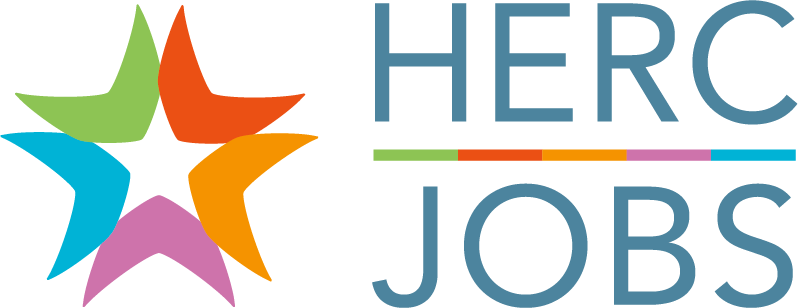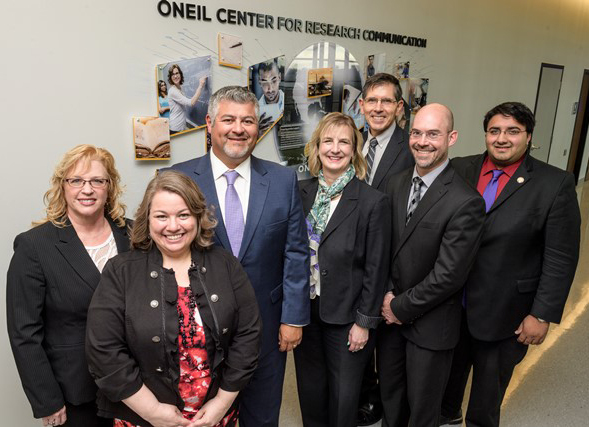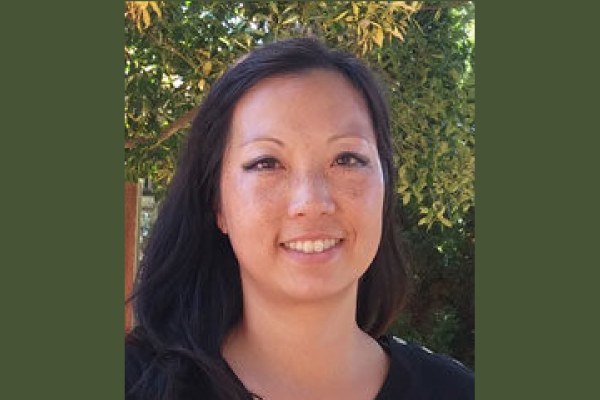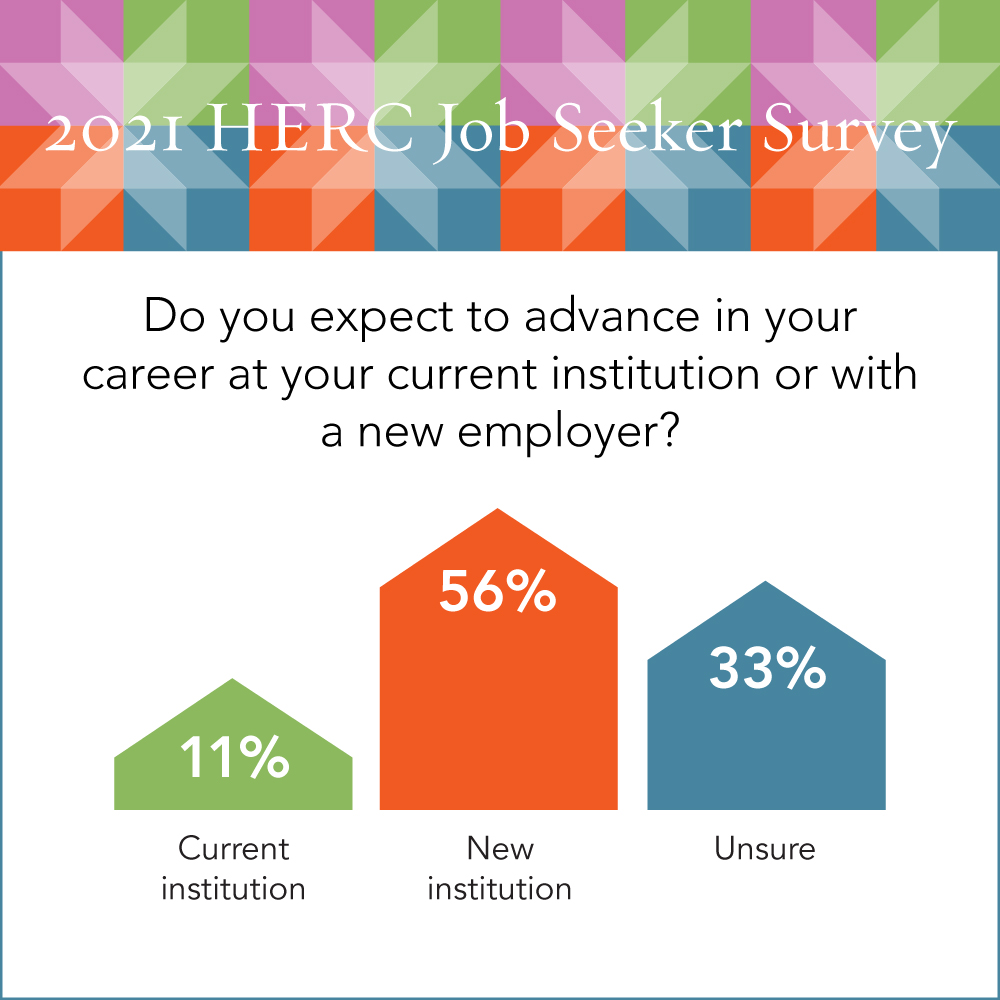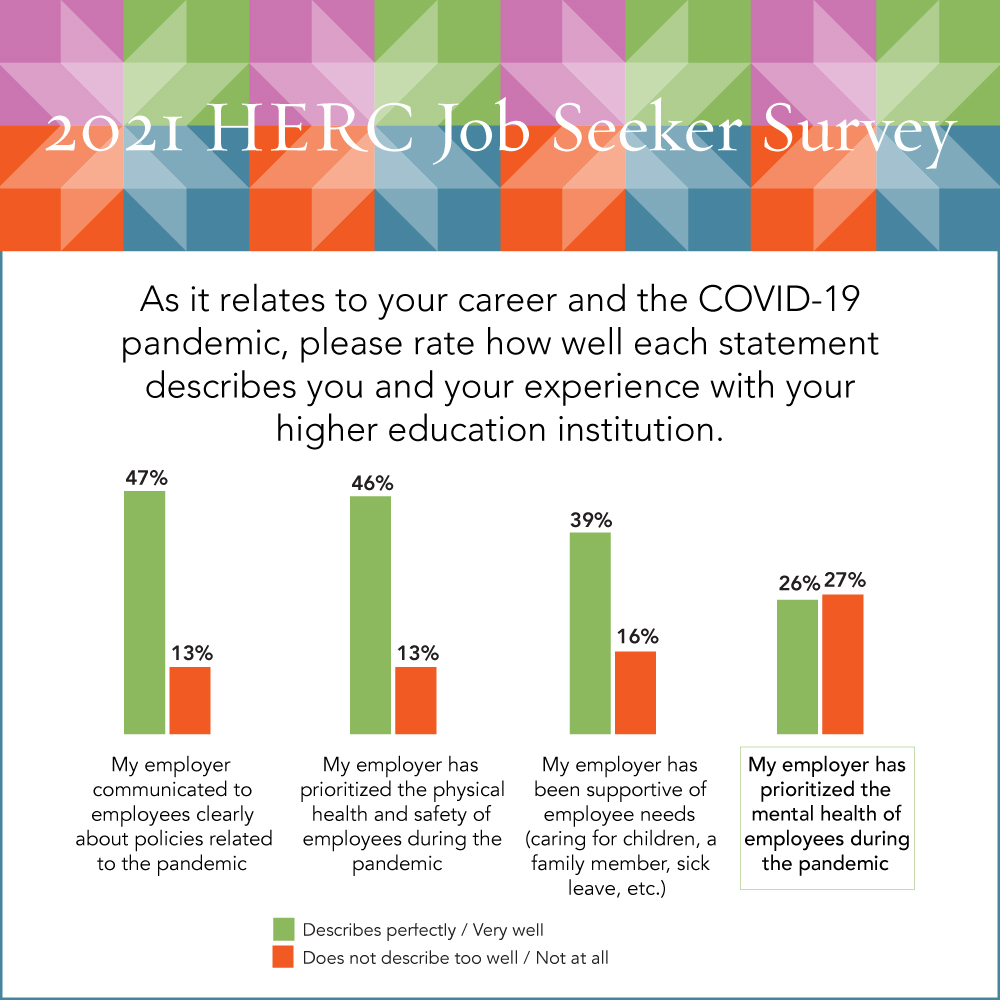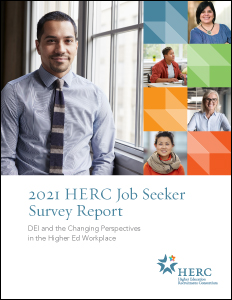
If you’ve needed mental health support over the last year, you’re not alone. According to Dr. George Everly, a disaster mental health expert at Johns Hopkins, “There’s no doubt that the coronavirus pandemic will be the most psychologically toxic disaster in anyone’s lifetime… This pandemic is a disaster of uncertainty, and the greater the uncertainty surrounding a disaster, the greater the psychological casualties.”
Although 39% of employers have updated their health plans since the pandemic began with 30% increasing access to mental health services (e.g., telehealth), 40% of employees reported that their employers haven’t done enough to support their mental health. A July 2021 survey found that two-thirds of employees had clinically relevant anxiety and depression symptoms and 25% don’t have access to an in-network therapist. In the 2021 HERC Job Seeker Survey of higher education professionals, respondents reported confidence in some of the support provided by employers during the COVID-19 pandemic, but confidence dipped when rating their employer’s prioritization of employees’ mental health.
Below are tips for evaluating the mental health services provided by potential employers as well as identifying and using available services at your current employer.
Evaluating Potential Employers
Mental health benefits are a critical concern that 76% of workers consider when evaluating potential employers. The Social Security Administration lists the following as four characteristics of a mental health-friendly employer:
- A good track record: Use social media and informational interviews to ask former employees about their mental health-related services. Particularly helpful information may come from someone that requested an accommodation.
- Flexible timing and scheduling: A strict 9-to-5 schedule is often unnecessary, particularly in higher education. Look for employers that actively accommodate alternative schedules.
- Specific accommodations: In light of the pandemic, ask employers what (mental) health accommodations they offer and if any of their employees actively use them. Telecommuting, on-campus mental health professionals, a holistic and comprehensive employee wellness program that addresses stress management, mental health time and/or days, mental health training for supervisors, and clear expectations for promotion are all good signs.
- Mental health benefits: Does the employer offer mental health and substance use disorder benefits? If so, pay close attention to the financial requirements (including copays), treatment limitations, and the provider network. Adequate mental health care should not prove financially burdensome or require finding and out-of-network provider due to low in-network availability.
Identifying Mental Health Services
Ideally, you should seek out access to mental health services as soon as you start a new position, regardless of whether you need them at that time. After all, 80% of Americans will experience a clinically diagnosable mental health event at some point in their lifetime. Having the information already on hand when you do need mental health care will make it easier and faster to access.
In any event, be sure that you know the legal mental health obligations of your employer. For instance, in the U.S., businesses with at least 15 employees must provide reasonable accommodations. There may be additional protections and/or benefits based on your city and state.
You should also check your email for communication from a supervisor or human resources (HR) about the available mental health services. Most institutions have a website that describes their health benefits as well as one dedicated to mental health services. If you have trouble finding this information, or it is unclear, reach out to HR or a supervisor for help.
Using Your Mental Health Benefits
The American Psychiatric Association reported in 2020 that 30% of employees worry about retaliation or being fired if they seek mental health care. The most straightforward and affordable way to access mental health services without disclosing them to a supervisor is to find an in-network provider. Every health insurance company maintains a website listing in-network providers by health specialty.
Unlike the primary care doctor that you may see annually, mental health professionals need to be seen frequently (usually at least once a month) and need to be someone that you can feel emotionally vulnerable with. If things don’t seem to click after the first few appointments, don’t stop seeking help, instead, move therapists – this may happen a few times. Remember that you can use your HSA funds to pay for mental health services tax-free.
If necessary, advocate for yourself and request accommodations. Before you begin this process, there are some important things to know:
- Regardless of whether you think you may need accommodation, you DO NOT have to disclose your disability during the application process and this DOES NOT affect your right to an accommodation after hiring. Although you will need to provide some information about your disability when discussing accommodations.
- Consider what your employer and/or supervisor may already know, or not, about the limitations of your disability, whether through workplace mental health trainings or elsewhere. This will help you identify relevant pieces of information to include with your request.
- Identify the resources or support that you want and those you need. Who controls your access to this resource? Whether the resource(s) are “owned” by your supervisor or HR may impact who you decide to discuss your accommodation needs with.
- Consider who among your supervisors and/or HR colleagues have talked about their own mental health, shared personal challenges, and shares a level of trust with you. Factor this information in when you choose who to have this discussion with.
Resources for accommodation discussions:
How to Ask Your Boss for a Mental Health Day Off Work
How to Talk About Your Mental Health with Your Employer
Check out more Top Articles on HERC Jobs.
About the Author: Dr. Ada Hagan is a microbiologist with a passion for making science accessible. In 2019, Dr. Hagan founded Alliance SciComm & Consulting, LLC as a means to use her strong background in communications and higher education to help make scientific concepts more easily understood and make the academy more inclusive to future scientists from all backgrounds. Her writing and research have been featured by BBC Radio 4, Science Careers, The Scientist, Massive Science, and the American Society for Microbiology.
